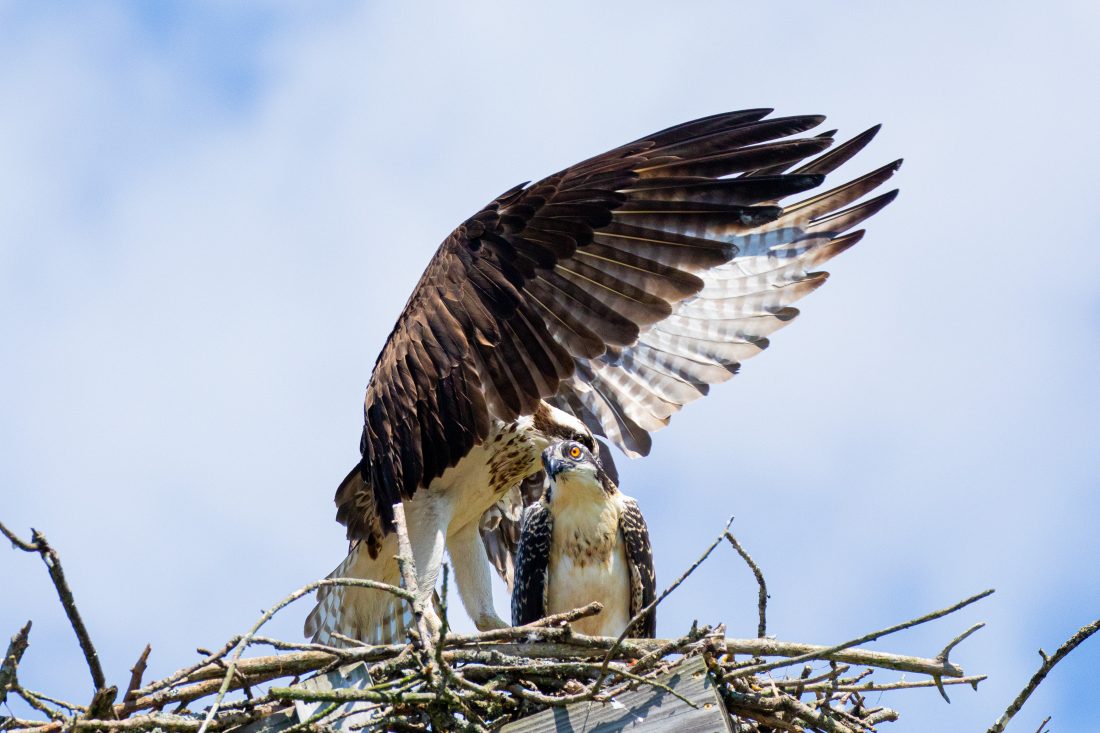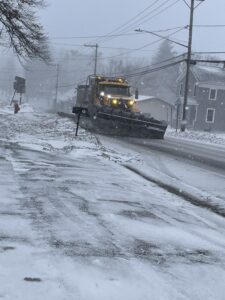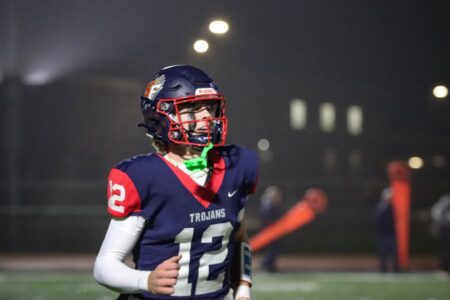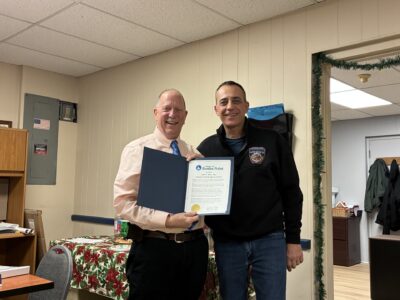Finding A New Home
Osprey Settle At Watershed Conservancy Preserve
- A parent and infant osprey nesting at Loomis Goose Creek Preserve are pictured during a flying lesson this summer. The osprey had been nesting on an electrical pole at Ashville Bay Marina for a few years. Photo by Dr. Jeanne Wiebenga
- A parent and infant osprey nesting at Loomis Goose Creek Preserve are pictured during a flying lesson this summer. The osprey had been nesting on an electrical pole at Ashville Bay Marina for a few years. Photo by Dr. Jeanne Wiebenga

A parent and infant osprey nesting at Loomis Goose Creek Preserve are pictured during a flying lesson this summer. The osprey had been nesting on an electrical pole at Ashville Bay Marina for a few years. Photo by Dr. Jeanne Wiebenga
The Chautauqua Watershed Conservancy’s Loomis Goose Creek Preserve along Fairmount Avenue has new tenants after a family of osprey have finally settled at the refuge’s nesting platform.
In 2015 CWC volunteers, including builder Bob Karbacka, constructed a wooden nesting platform with the hope that it would become a home for local osprey in the area.
The long wait came to an end in March when a mating pair of the raptors relocated from their nearby home before hatching a chick this spring.
“We were very disappointed for many years that the osprey were ignoring it,” said John Jablonski, CWC executive director. “They actually had nested on an electrical pole at Ashville Bay Marina for a few years and I think that was of concern to National Grid. I would say in March we noticed that the osprey were carrying sticks to (the platform). A pair mated there and fledged one child. One osprey was fledged, so they succeeded in raising one there.”
Osprey are large hawks found on every continent except Antarctica, and often nest along coasts and inland lakes where they feed on fish, according to the U.S. Fish and Wildlife Service.

A parent and infant osprey nesting at Loomis Goose Creek Preserve are pictured during a flying lesson this summer. The osprey had been nesting on an electrical pole at Ashville Bay Marina for a few years. Photo by Dr. Jeanne Wiebenga
They will return to their nests after migrating south during the winter months, and young osprey often make their first flight 60 days after hatching. Eggs are often laid in April or May and incubated for about a month.
Dr. Jeanne Wiebenga has watched the family since the middle of April, and was able to photograph some of the flying lessons for the new hatchling born at Loomis Creek.
“For the first 3 months the couple was busy building the nest and carried sticks, grass and other materials until it became thick and full,” Wiebenga said. “By late May one of the birds was seen brooding on the nest, while the other was carrying fish from Lake Chautauqua in its talons to feed the couple. It was not until early August that a chick was first seen, looking almost fully grown, but not yet able to fly. However, within a week, guided by its parents, it took off on a updraft of wind. The parents will be around for a while longer to hone their chick’s flying and feeding skills.”
The 30-acre preserve was of interest to the CWC as early as the 1990s, and was finally purchased in 2011.
“It took several years to put together a deal with the owners and we then constructed the kiosk and platform,” Jablonski said. “That was a wetland reserve program. We worked with the landowner who was able to apply for federal funds to restore wetlands there, so the ponds that are there were constructed as part of the federal grant.”
A New York State Department of Environmental Conservation wetlands conservation grant was acquired with the help of then-State Sen. Cathy Young, R-Olean.
In addition to its focus on watershed management, CWC preserves also serve as important areas of refuge for wildlife. The organization has also constructed a nesting platform at wetlands on Whitney Point.
Between the 1940s and 1970, the American osprey population was damaged by the pesticide DDT.
“Since the ban of DDT in New York in 1971, and in the rest of the country in 1972, the osprey population has made a comeback. In 1983, the osprey was downgraded to Threatened from its 1976 listing as Endangered, and in 1999, it was down graded again to a Species of Special Concern,” U.S. Fish and Wildlife said.
It could be some time before the adolescent osprey is seen in the area again, “After fledging, the young remain with their parents for up to two months, and then remain at their wintering grounds for two to three years until they return north to make their first attempt at breeding.”







